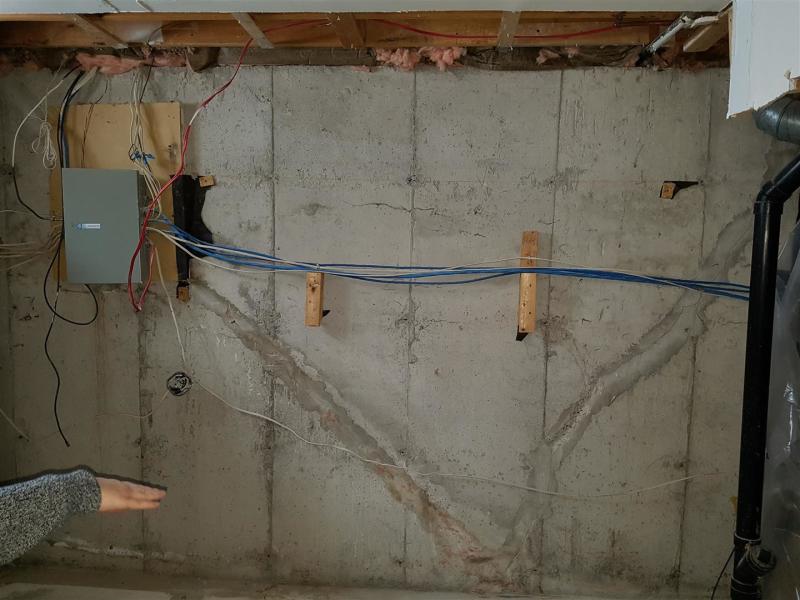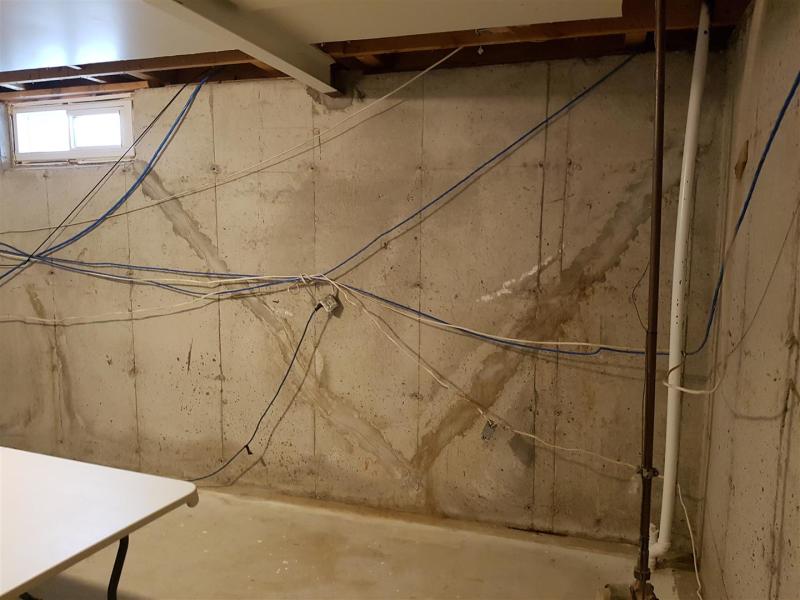garpike
Structural
- May 3, 2011
- 4
I came across some unusual cracks today while inspecting the unreinforced concrete foundation of a semi-detached two-story home in Eastern Ontario. The side exterior wall (on the detached side) has 4 diagonal cracks in two roughly symmetrical V-shaped patterns which begin at each end of the wall (see photos below). There is also a vertical crack running down from the other side of the window. The wall supports two steel beams which appear to support both the first and second floor joists. Roof trusses run parallel to the wall supported on the front and back walls. The cracks have been "repaired" but most of them have reopened. All other basement walls appear to be free of cracks (although they are not all exposed).
I thought it might have been cold-joints from poor construction, but it seems unusually that there would be two of them that are roughly symmetrical.
Could some strange settlement be the cause?
Shrinkage?
Vibration? (there is a regularly used rail line about 40 m away)
Could it be earthquake damage?
Any idea what could cause this?


I thought it might have been cold-joints from poor construction, but it seems unusually that there would be two of them that are roughly symmetrical.
Could some strange settlement be the cause?
Shrinkage?
Vibration? (there is a regularly used rail line about 40 m away)
Could it be earthquake damage?
Any idea what could cause this?


